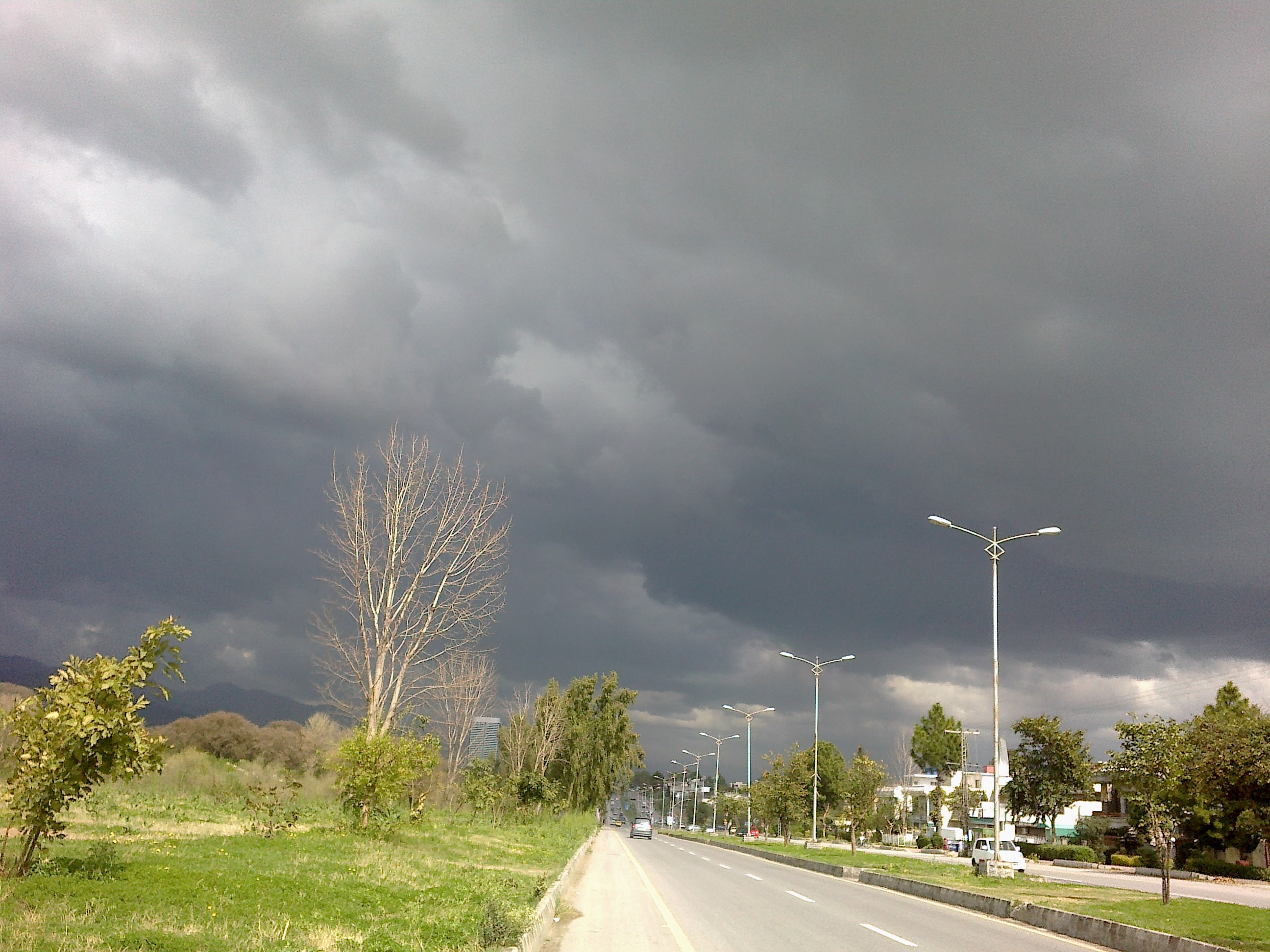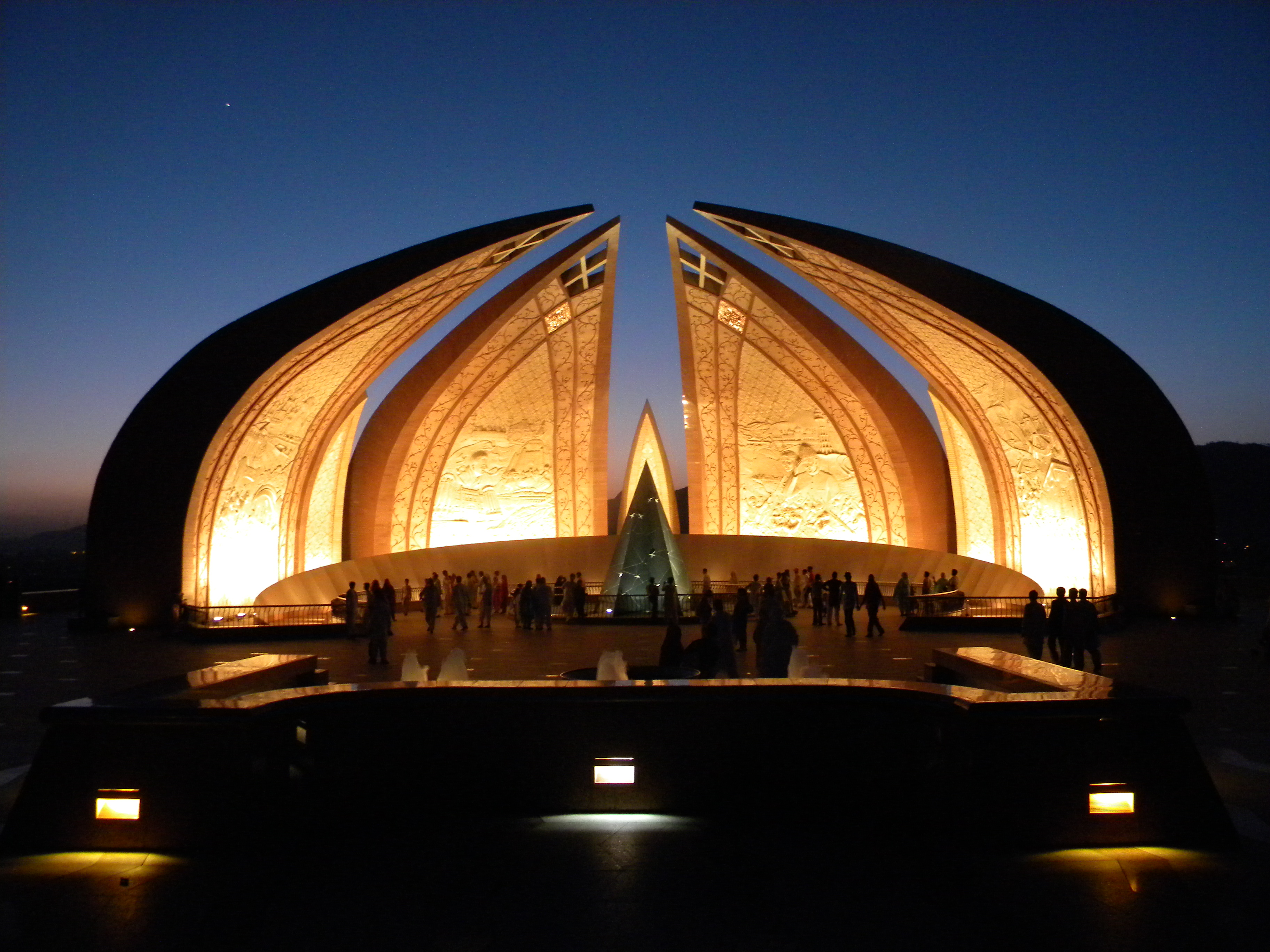Beautiful Wallpapers Download Biography
source(google.com.pk)
Islamabad is the capital city of Pakistan and the ninth largest city in the country. Located within the Islamabad Capital Territory (ICT), the population of the city has grown from 100,000 in 1951 to 1.15 million as of 2011. The greater Islamabad-Rawalpindi Metropolitan Area is the third largest conurbation in Pakistan with a population of over 4.5 million inhabitants. Since its foundation, Islamabad has attracted people from all over Pakistan, making it one of the most cosmopolitan and urbanized cities of Pakistan. As the capital, Islamabad is the seat of the Government of Pakistan; the Presidential Palace (Aiwan-e-Sadr) is also located here. Islamabad is home to the Pakistan Monument, which is one of the two national monuments of Pakistan. Islamabad is known as clean, calm and green city. It hosts a large number of diplomats, politicians and government employees.
Islamabad is a modern, well planned and maintained city located in the Pothohar Plateau in the northeastern part of the country, within the Islamabad Capital Territory. The region has historically been a part of the crossroads of Punjab and Khyber Pakhtunkhwa with the Margalla Pass acting as the gateway between the two regions. The city was built during the 1960s to replace Karachi as Pakistan's capital. Islamabad is a well-organised international city divided into several different sectors and zones. It is regarded as the most developed city in Pakistan and is ranked as a Gamma- world city. The city is home to the Faisal Mosque, the largest mosque in South Asia and the fourth largest mosque in the world.
Islamabad has the highest literacy rate in Pakistan. There are 16 recognised universities in Islamabad, including some of the top-ranked universities in Pakistan: Quaid-i-Azam University, Pakistan Institute of Engineering & Applied Sciences, and National University of Sciences and Technology. Allama Iqbal Open University in Islamabad is one of the world's largest universities by enrolment. Islamabad has the lowest infant mortality rate in the country at 38 deaths per thousand as compared to the national average of 78 deaths per thousand.The main administrative authority of the city is Islamabad Capital Territory Administration (ICT) with some help from Capital Development Authority (CDA) which oversees the planning, development, construction, and administration of the city. Islamabad Capital Territory is divided into eight zones: Administrative Zone, Commercial District, Educational Sector, Industrial Sector, Diplomatic Enclave, Residential Areas, Rural Areas and Green Area. Islamabad city is divided into five major zones: Zone I, Zone II, Zone III, Zone IV, and Zone V. Out of these, Zone IV is the largest in area. Zone I consists mainly of all the developed residential sectors while Zone II consists of the under-developed residential sectors. Each residential sector is identified by a letter of the alphabet and a number, and covers an area of approximately 2 km × 2 km (1 1⁄4 mi × 1 1⁄4 mi). The sectors are lettered from A to I, and each sector is divided into four numbered sub-sectors.When the master plan for Islamabad was drawn up in 1960, Islamabad and Rawalpindi, along with the adjoining areas, would be integrated to form a large metropolitan area called Islamabad/Rawalpindi Metropolitan Area. The area would consist of the developing Islamabad, the old colonial cantonement city of Rawalpindi, and Margalla Hills National Park, including surrounding rural areas. However, Islamabad city is part of the Islamabad Capital Territory, while Rawalpindi is part of Rawalpindi District, which is part of province of Punjab .
In.Islamabad's architecture is a combination of modernity and old Islamic and regional traditions. The Saudi-Pak Tower is an example of the integration of modern architecture with traditional styles. The beige-coloured edifice is trimmed with blue tile works in Islamic tradition, and is one of Islamabad's tallest buildings. Other examples of intertwined Islamic and modern architecture include Pakistan Monument and Faisal Mosque. Other notable structures are: Secretariat Complex designed by Gio Ponti, Presidency based on Mughal architecture and the National Assembly by Edward Durell Stone.Islamabad is a net contributor to the Pakistani economy, as whilst having only 0.8% of the country's population, it contributes 1% to the country's GDP. Islamabad Stock Exchange, founded in 1989, is Pakistan's third largest stock exchange after Karachi Stock Exchange and Lahore Stock Exchange. The exchange has 118 members with 104 corporate bodies and 18 individual members. The average daily turnover of the stock exchange is over 1 million shares. As of 2012, Islamabad LTU (Large Tax Unit) was responsible for Rs 371 billion in tax revenue, which amounts to 20% of all the revenue collected by Federal Board of Revenue.
Islamabad boasts the highest literacy rate in Pakistan at 87%, and has most advanced educational institutes in the country. A large number of public and private sector educational institutes are present here.There are 16 recognised universities in Islamabad with a total enrolment of 372,974 students and 30,144 teachers. The world's second largest general university by enrolment, Allama Iqbal Open University is located in Islamabad for distance education. The two top ranked engineering universities by Higher Education Commission; Pakistan Institute of Engineering & Applied Sciences and National University of Sciences and Technology, also have their headquarters in the capital. Quaid-i-Azam University in Islamabad is the top ranked university in Pakistan in the general category. Islamabad has both public and private medical centres. The largest hospital in Islamabad is Pakistan Institute of Medical Sciences (PIMS) hospital. It was established in 1985 as a teaching and doctor training institute. PIMS functions as a National Reference Center and provides specialised diagnostic and curative services. The hospital has 30 major medical departments.Islamabad is connected to major destinations around the world through Benazir Bhutto International Airport, previously known as Islamabad International Airport. The airport is the third largest in Pakistan and is located outside Islamabad, in Chaklala, Rawalpindi. In fiscal year 2004–2005, over 2.88 million passengers used Benazir Bhutto International Airport and 23,436 aircraft movements were registered.










Islamabad is the capital city of Pakistan and the ninth largest city in the country. Located within the Islamabad Capital Territory (ICT), the population of the city has grown from 100,000 in 1951 to 1.15 million as of 2011. The greater Islamabad-Rawalpindi Metropolitan Area is the third largest conurbation in Pakistan with a population of over 4.5 million inhabitants. Since its foundation, Islamabad has attracted people from all over Pakistan, making it one of the most cosmopolitan and urbanized cities of Pakistan. As the capital, Islamabad is the seat of the Government of Pakistan; the Presidential Palace (Aiwan-e-Sadr) is also located here. Islamabad is home to the Pakistan Monument, which is one of the two national monuments of Pakistan. Islamabad is known as clean, calm and green city. It hosts a large number of diplomats, politicians and government employees.
Islamabad is a modern, well planned and maintained city located in the Pothohar Plateau in the northeastern part of the country, within the Islamabad Capital Territory. The region has historically been a part of the crossroads of Punjab and Khyber Pakhtunkhwa with the Margalla Pass acting as the gateway between the two regions. The city was built during the 1960s to replace Karachi as Pakistan's capital. Islamabad is a well-organised international city divided into several different sectors and zones. It is regarded as the most developed city in Pakistan and is ranked as a Gamma- world city. The city is home to the Faisal Mosque, the largest mosque in South Asia and the fourth largest mosque in the world.
Islamabad has the highest literacy rate in Pakistan. There are 16 recognised universities in Islamabad, including some of the top-ranked universities in Pakistan: Quaid-i-Azam University, Pakistan Institute of Engineering & Applied Sciences, and National University of Sciences and Technology. Allama Iqbal Open University in Islamabad is one of the world's largest universities by enrolment. Islamabad has the lowest infant mortality rate in the country at 38 deaths per thousand as compared to the national average of 78 deaths per thousand.The main administrative authority of the city is Islamabad Capital Territory Administration (ICT) with some help from Capital Development Authority (CDA) which oversees the planning, development, construction, and administration of the city. Islamabad Capital Territory is divided into eight zones: Administrative Zone, Commercial District, Educational Sector, Industrial Sector, Diplomatic Enclave, Residential Areas, Rural Areas and Green Area. Islamabad city is divided into five major zones: Zone I, Zone II, Zone III, Zone IV, and Zone V. Out of these, Zone IV is the largest in area. Zone I consists mainly of all the developed residential sectors while Zone II consists of the under-developed residential sectors. Each residential sector is identified by a letter of the alphabet and a number, and covers an area of approximately 2 km × 2 km (1 1⁄4 mi × 1 1⁄4 mi). The sectors are lettered from A to I, and each sector is divided into four numbered sub-sectors.When the master plan for Islamabad was drawn up in 1960, Islamabad and Rawalpindi, along with the adjoining areas, would be integrated to form a large metropolitan area called Islamabad/Rawalpindi Metropolitan Area. The area would consist of the developing Islamabad, the old colonial cantonement city of Rawalpindi, and Margalla Hills National Park, including surrounding rural areas. However, Islamabad city is part of the Islamabad Capital Territory, while Rawalpindi is part of Rawalpindi District, which is part of province of Punjab .
In.Islamabad's architecture is a combination of modernity and old Islamic and regional traditions. The Saudi-Pak Tower is an example of the integration of modern architecture with traditional styles. The beige-coloured edifice is trimmed with blue tile works in Islamic tradition, and is one of Islamabad's tallest buildings. Other examples of intertwined Islamic and modern architecture include Pakistan Monument and Faisal Mosque. Other notable structures are: Secretariat Complex designed by Gio Ponti, Presidency based on Mughal architecture and the National Assembly by Edward Durell Stone.Islamabad is a net contributor to the Pakistani economy, as whilst having only 0.8% of the country's population, it contributes 1% to the country's GDP. Islamabad Stock Exchange, founded in 1989, is Pakistan's third largest stock exchange after Karachi Stock Exchange and Lahore Stock Exchange. The exchange has 118 members with 104 corporate bodies and 18 individual members. The average daily turnover of the stock exchange is over 1 million shares. As of 2012, Islamabad LTU (Large Tax Unit) was responsible for Rs 371 billion in tax revenue, which amounts to 20% of all the revenue collected by Federal Board of Revenue.
Islamabad boasts the highest literacy rate in Pakistan at 87%, and has most advanced educational institutes in the country. A large number of public and private sector educational institutes are present here.There are 16 recognised universities in Islamabad with a total enrolment of 372,974 students and 30,144 teachers. The world's second largest general university by enrolment, Allama Iqbal Open University is located in Islamabad for distance education. The two top ranked engineering universities by Higher Education Commission; Pakistan Institute of Engineering & Applied Sciences and National University of Sciences and Technology, also have their headquarters in the capital. Quaid-i-Azam University in Islamabad is the top ranked university in Pakistan in the general category. Islamabad has both public and private medical centres. The largest hospital in Islamabad is Pakistan Institute of Medical Sciences (PIMS) hospital. It was established in 1985 as a teaching and doctor training institute. PIMS functions as a National Reference Center and provides specialised diagnostic and curative services. The hospital has 30 major medical departments.Islamabad is connected to major destinations around the world through Benazir Bhutto International Airport, previously known as Islamabad International Airport. The airport is the third largest in Pakistan and is located outside Islamabad, in Chaklala, Rawalpindi. In fiscal year 2004–2005, over 2.88 million passengers used Benazir Bhutto International Airport and 23,436 aircraft movements were registered.
Beautiful Wallpapers Download

Beautiful Wallpapers Download

Beautiful Wallpapers Download

Beautiful Wallpapers Download

Beautiful Wallpapers Download

Beautiful Wallpapers Download

Beautiful Wallpapers Download

Beautiful Wallpapers Download

Beautiful Wallpapers Download

Beautiful Wallpapers Download
